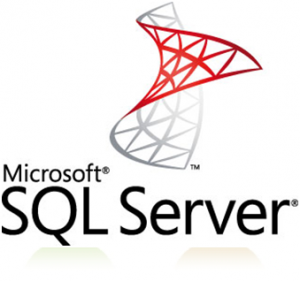 TARGET AUDIENCE
TARGET AUDIENCE
The primary audience for this course is IT Professionals who want to become skilled on SQL Server 2016 product features and technologies for implementing a database. The secondary audiences for this course are individuals who are developers from other product platforms looking to become skilled in the implementation of a SQL Server 2016 database.
DURATION 5 days
COURSE PREREQUISITES
- Basic knowledge of the Microsoft Windows operating system and its core functionality.
- Working knowledge of Transact-SQL.
- Working knowledge of relational databases.
COURSE OBJECTIVES
- Design and Implement Tables.
- Describe advanced table designs
- Ensure Data Integrity through Constraints.
- Describe indexes, including Optimized and Columnstore indexes
- Design and Implement Views.
- Design and Implement Stored Procedures.
- Design and Implement User Defined Functions.
- Respond to data manipulation using triggers.
- Design and Implement In-Memory Tables.
- Implement Managed Code in SQL Server.
- Store and Query XML Data.
- Work with Spatial Data.
- Store and Query Blobs and Text Documents.
COURSE CONTENT
Module 1: Introduction to Database Development
- Introduction to the SQL Server Platform
- SQL Server Database Development Tasks
- Lab : SQL Server Database Development Tasks
Module 2: Designing and Implementing Tables
- Designing Tables
- Data Types
- Working with Schemas
- Creating and Altering Tables
- Lab : Designing and Implementing Tables
Module 3: Advanced Table Designs
- Partitioning data
- Compressing Data
- Temporal Tables
- Lab : Using Advanced Table Designs
Module 4: Ensuring Data Integrity through Constraints
- Enforcing data Integrity
- Implementing Domain Integrity
- Implementing Entity and Referential Integrity
- Lab : Ensuring Data Integrity through Constraints
Module 5: Introduction to Indexes
- Core Indexing Concepts
- Data Types and Indexes
- Single Column and Composite Indexes
- Lab : Implementing Indexes
Module 6: Designing Optimized Index Strategies
- Covering Indexes
- Managing Indexes
- Execution Plans
- Using the DTE
- Lab : Designing Optimized Index Strategies
Module 7: Columnstore Indexes
- Introduction to Columnstore indexes
- Creating Columnstore indexes
- Working Columnstore indexes
- Lab : Using Columnstore indexes
Module 8: Designing and Implementing Views
- Introduction to views
- Creating and managing views
- Performance considerations for views
- Lab : Designing and Implementing Views
Module 9: Designing and Implementing Stored Procedures
- Introduction to Stored Procedures
- Working with Stored Procedures
- Implementing Parameterized Stored Procedures
- Controlling Execution Context
- Lab : Designing and Implementing Stored Procedures
Module 10: Designing and Implementing User-Defined Functions
- Overview of Functions
- Designing and Implementing Scalar Functions
- Designing and Implementing Table-Valued Functions
- Implementation Considerations for Functions
- Alternatives to Functions
- Lab : Designing and Implementing User-defined Functions
Module 11: Responding to Data Manipulation via Triggers
- Designing DML TriggersImplementing DML Triggers
- Advanced Trigger Concepts
- Lab : Responding to Data Manipulation via Triggers
Module 12: Using In-Memory Tables
- In-Memory tables
- Native Stored Procedures
- Lab : In Memory OLTP
Module 13: Implementing Managed Code in SQL Server
- Introduction to SQL CLR Integration
- Importing and Configuring Assemblies
- Implementing SQL CLR Integration
- Lab : Implementing Managed Code in SQL Server
Module 14: Storing and Querying XML Data in SQL Server
- Introduction to XML and XML Schemas
- Storing XML Data and Schemas in SQL Server
- Implementing the XML Data Type
- Using the T-SQL FOR XML Statement
- Getting Started with xQuery
- Lab : Storing and Querying XML Data in SQL Server
Module 15: Working with SQL Server Spatial Data
- Introduction to Spatial Data
- Working with SQL Server Spatial Data Types
- Using Spatial Data in Applications
- Lab : Working with SQL Server Spatial Data
Module 16: Storing and Querying Blobs and Text Documents in SQL Server
- Considerations for BLOB Data
- Working with FileStream
- Using Full-Text Search
- Lab : Storing and Querying Blobs and Text Documents in SQL Server
